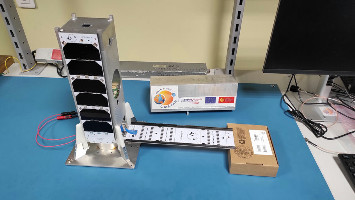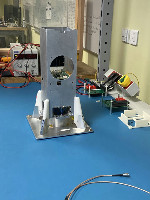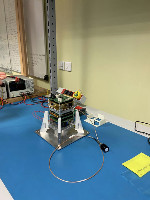| Satellite | CREME (Cubesat for Radiation Environment Monitoring Experiment) |
|---|---|
| Form factor | CubeSat |
| Units or mass | 3U |
| Status | not launched, expected in 2025 |
| Launcher | not launched |
| Organization | University of Toulouse Space Center (CSUT) |
| Institution | University |
| Entity type | Academic / Education |
| Nation | France |
| Partners | ONERA, Astreos |
| Oneliner |
Measuring the radiation induced by the Van Allen belts. |
| Description |
Aims to develop a payload composed of a charged particle detector at moderate cost. It will be dedicated to both space weather and the measurement of the radiative environment that constrains the EOR missions, while guaranteeing quality measures. Its small footprint will allow validation via a flight on a CubeSat 3U. The detector envisaged is based on the principle of silicon diodes associated with an optimized shielding to discriminate charged particles encountered in space environment (protons of energy larger than MeV and electrons beyond a few hundred keV). It must have a cost and a low footprint and its design should easily adapt to any type of platforms (industrial or scientific). The 3U platform, developed by ISAE-SUPAERO, draws on the expertise and feedback gained during the EyeSat (CNES), Entrysat (ISAE-SUPAERO – ONERA) and NIMPH (ISAE-SUPAERO, TAS, CNRS / LAAS) projects. It will be derived from the platform under development (MONITA) for the NIMPH project. The design / realization differential will remain limited, especially since the radiation monitor does not require precise attitude control. The risks are therefore low and the feasibility of the platform validated. Beyond the framework of the CREME project, it is envisaged that the collected flight measurements will be exploited at the CSUT, thus enhancing the space domain with the students. They will also validate the concept of the detector in orbit and obtain new measures to enrich space weather monitoring services. One of the prospects for such a project will be to offer space industry companies a low-cost, low-profile and small mass radiation monitor that is very versatile so that it can be easily integrated on commercial satellites. The idea behind this is to be able to eventually have a sensor that can accommodate the measured species (protons or electrons) and the measured energy range (between 1 and 100 MeV for protons, 100 keV to 4 MeV for electrons). Thus, in the future, a constellation of such detectors would make it possible to measure the spatial environment as a whole, and to characterize orbits hitherto poorly described from the radiative point of view. While ISAE-SUPAERO will be responsible for the nanosatellite platform and the ground station, ONERA will design the miniaturized measuring instrument, a flight demonstrator, thanks to the mastery of physics and the measurement of Van Allen belts. The long-term objective will be to have a new instrument, to be industrialized, complementary to instruments such as ICARE-NG from CNES. Although less efficient, it would be cheaper and easier to carry. This nanosatellite is developed by ONERA - The French Aerospace Lab, Institut Supérieur de l'Aéronautique et de l'Espace and us, Astreos. |
| Sources | [1] [2] [3] [4] [5] [6] [7] [8] |
| Photo sources | [1] |
Last modified: 2024-12-09



